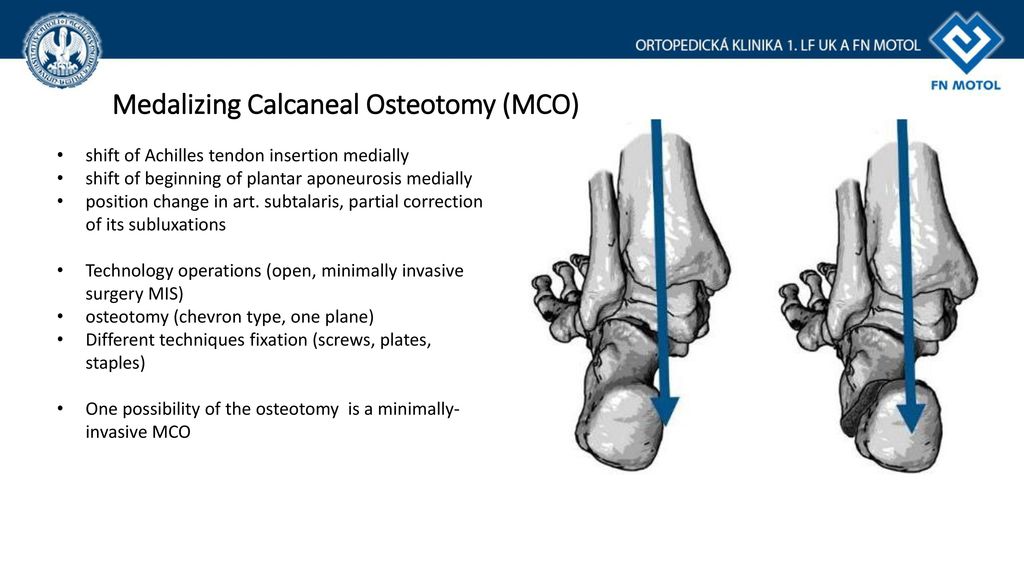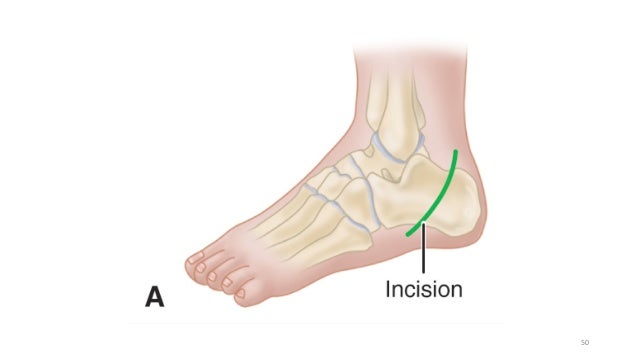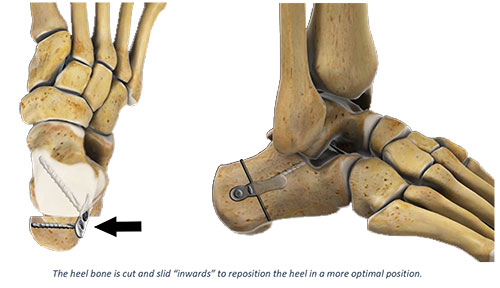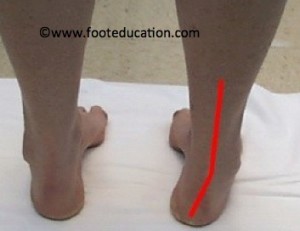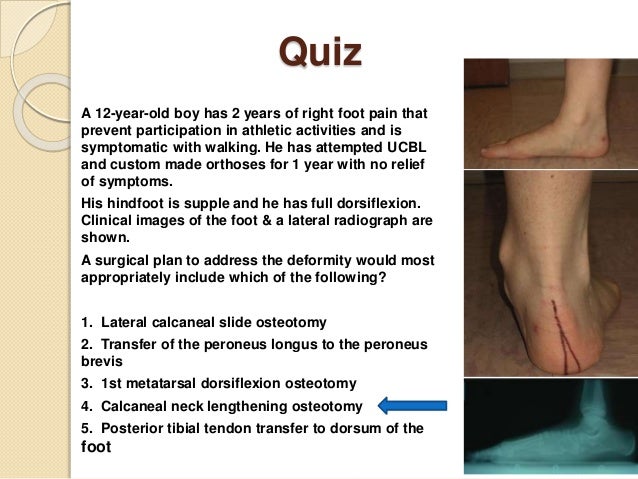Lateral Calcaneal Slide Osteotomy

What is a calcaneal osteotomy.
Lateral calcaneal slide osteotomy. Patients with stage 2b flatfoot have lateral pain due to calcaneofibular impingement and a more severely abducted forefoot. Arthrex s recently launched minimally invasive surgery platform allows surgeons to perform this osteotomy through a tiny incision. By extending the length of the calcaneus at the location of the talonavicular joint the talonavicular joint can be rotated from an abducted to neutral alignment. These patients benefit from posterior tibial tendon repair or flexor digitorum longus transfer along with a medial calcaneal slide osteotomy.
The posterior osteotomy fragment is manually mobilized and shifted laterally. Surgeons commonly perform the medial slide calcaneal osteotomy in conjunction with a flexor digitorum longus tendon transfer lateral column lengthening or a medial cuneiform osteotomy or arthrodesis. The surgeon also needs to address any equinus deformity associated with the pathology. Surgeons can then achieve fixation using the 7 0 mm compression ft screws or the 6 5 compression pt screws.
The incision was carried down through the skin only with a 15 blade knife. The osteotomy is performed through an oscillating saw. Dr performed a lateral slding calcaneal osteotomy along with a lateral column lengthening need help with cpt code. When the heel is observed from behind it is generally situated in line with the leg.
Use a sagittal saw or osteotome to perform the calcaneus osteotomy this is an osteotomy from proximal lateral to distal medial that starts 2 2 5 cm proximal to the cc joint and exits between the anterior and middle facets this is a complete osteotomy through the medial cortex. The calcaneus or heel bone plays an important role in walking. A calcaneal osteotomy is a common technique used to treat stage ii flatfoot deformity. Anterior calcaneal osteotomy lateral column lengthening a lateral column lengthening is performed typically to correct the forefoot abduction aspect of the deformity.
If needed a laterally based wedge can be removed and or the osteotomy fragment can be translated cranially. A specialized calcaneal slide plate was an effective fixation device for both medial and lateral calcaneal slide osteotomies for a variety of foot and ankle conditions. The union rate was 100 and none of the patients had hardware symptoms which is an improvement on published reports of symptomatic hardware after calcaneal slide osteotomy. The heel bone called the calcaneus is the main bone that lies in the heel of the hindfoot.
The lateral calcaneus cortex is exposed using a lateral incision. A calcaneal osteotomy comprises of making a cut across the heel bone and shifting it toward the inside medial or outside lateral.











